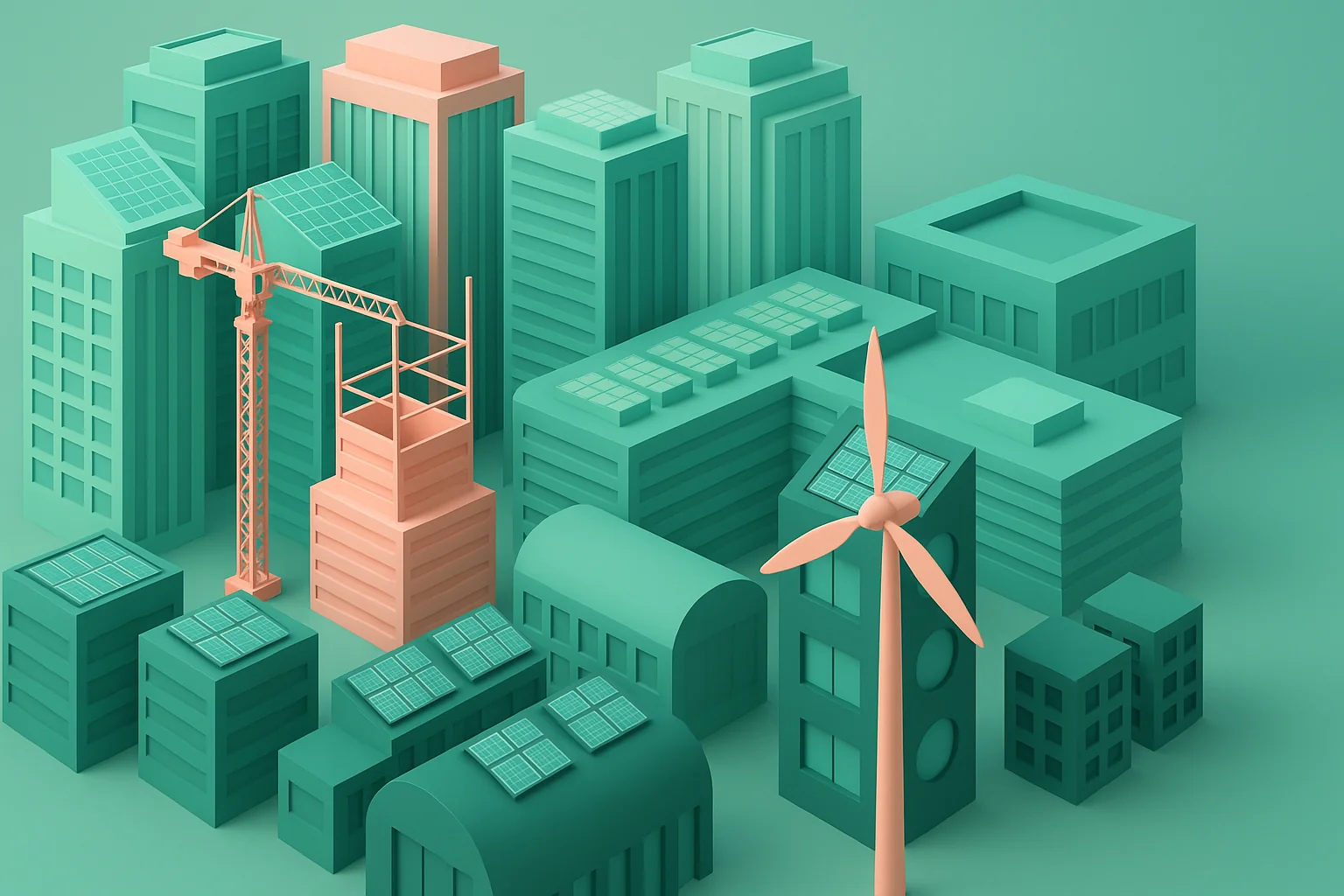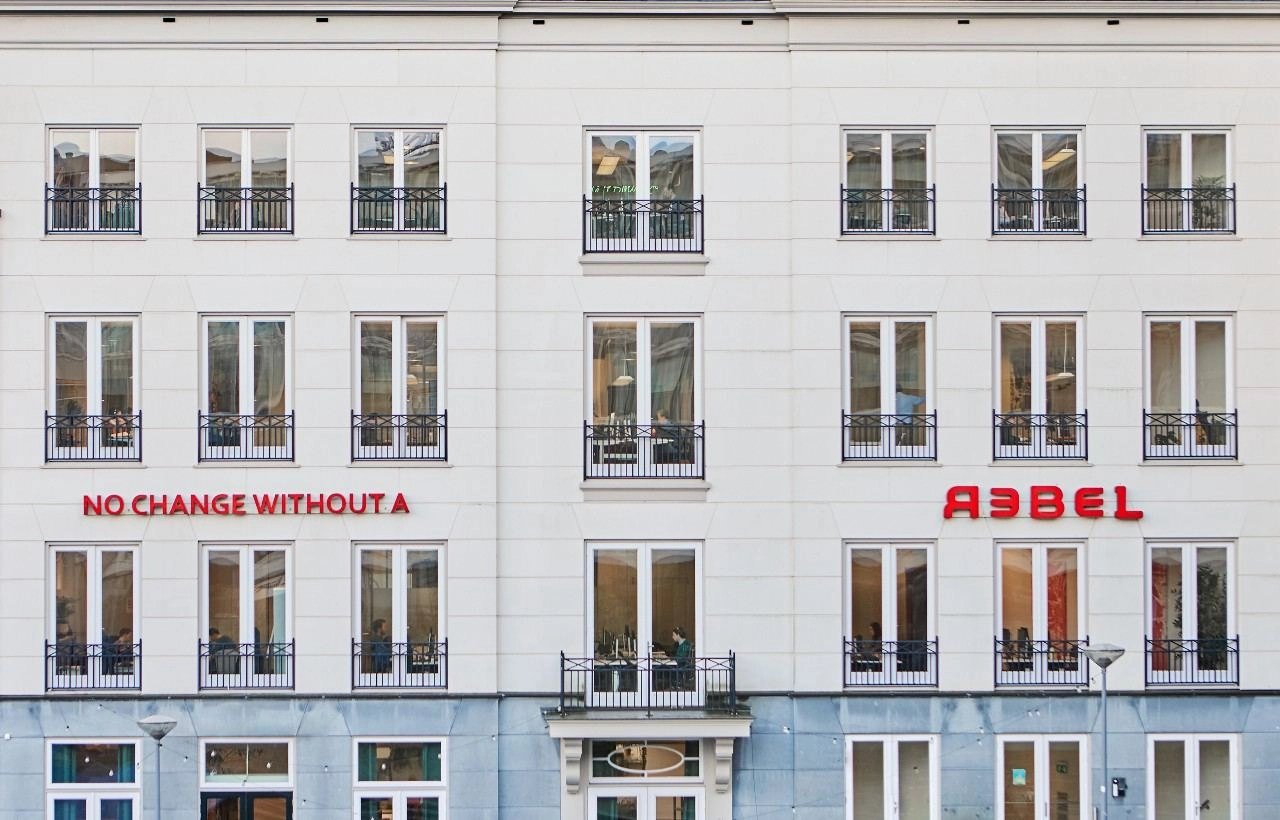A mission to make an impact with every project requires high ambitions for CO2 reduction. It’s no coincidence that Rebel Group is one of the first organisations to achieve certification on Step 3 of version 4.0 of the CO2 Performance Ladder. However, the consultancy also faces dilemmas. For example, how do you limit the impact of air travel as an internationally operating organization? These kinds of questions lead to interesting discussions, both internally and with the supply chain. “We are called Rebel for a reason; we do like to take a firm stance.”
Making a positive change with every project. That is the goal of Rebel, a research and consultancy firm specialising in public-private partnerships. Creating sustainable impact is one of the core values of the company, originally from Rotterdam, says Wouter de Waart. “This could be through building a new school, bridge, or road, but also by setting up a circular waste chain or developing a wind farm or heat network. Initially, sustainability for us meant long-lasting solutions, ones that work well in the long term for the government, the market, and society. Over the years, an environmental component has been added. In the projects we undertake, we also consider our environmental and climate impact, including reducing CO2 emissions.”
Twenty autonomous teams, one united Rebel Group
Rebel is no ordinary company. The consultancy consists of twenty different teams, each operating as its own limited liability company (LLC). De Waart: “Every employee (Rebel) has shares in the LLC they work in, making them co-owners of Rebel. This results in a much flatter hierarchy compared to traditional consultancies, with decisions being made in a decentralised and democratic manner. As mentioned, creating impact is one of our core values, but the way we achieve and measure that impact differs from team to team. For instance, the mobility team focuses on the accessibility of neighbourhoods and public facilities, while the project development team deals with urban issues. For the circular economy team – of which I am the director – it’s all about the careful use of resources.”
Choosing the CO2 Performance Ladder
In the search for more uniformity in measuring and monitoring impact, Rebel came across the CO2 Performance Ladder about five years ago, explains De Waart. “We encountered the Ladder when a colleague sent out an email asking, ‘Isn’t this something for us?’ As is customary with our collective decision-making, a group of enthusiastic colleagues took the lead and convinced the rest of the organisation to head in this direction. Teams that focus heavily on environmental impact and CO2 were the first to get started. One group analysed our environmental impact using the axes of the Corporate Sustainability Reporting Directive (CSRD), while another used the CO2 Performance Ladder. Several questions came up during this process, such as from colleagues in South Africa and the U.S., wondering if an international standard might be more relevant for them. To keep it manageable, we decided to have all European teams certified on the CO2 Performance Ladder.”
Setting up the project team
Next, a group of Rebels set to work on forming a project team, De Waart continues. “We organised the project team at the holding level. This seemed the most practical, as Rebels, besides having shares in their own team, also have shares in the central holding company. The project team consists of three directors who are active in both the teams and the holding – myself included – and two financial controllers. They help with data collection. For example, we use a central software package to collect all data, such as the number of kilometres driven, which we then translate into CO2 emissions. This way, not every team needs to report how many kilometres they’ve driven. Additionally, each European team has a contact person (ambassador) for the Ladder. These ambassadors assist with data collection and help brainstorm about goals and measures.”
Measures for scope 1 and 2
Reducing CO2 emissions in scope 1 and 2 was relatively simple, says De Waart. “The focus was primarily on energy consumption at our office and our travel movements. We were already in talks with the owner of our office in Rotterdam to use only green energy from local sources, and that’s what we’re doing now. We were also already taking steps in mobility. For example, we don’t have a fleet of cars, but each person has a business card for public transport. If you need to travel on the road, you can rent a car or use your own. The area where there’s still room for improvement is our air travel. For projects abroad, flying is sometimes unavoidable. We rarely fly for distances under 700 kilometres, and where possible, we take the train. The environmental impact of our flights comes almost entirely from long-haul flights, often intercontinental.”
Reducing air travel
The air travel issue leads to interesting discussions, continues De Waart. “We notice that opinions on this topic sometimes differ. A team working on process optimisation in ports worldwide, for example, often needs to visit a location to understand what’s going on there. Clients expect this too. Still, you can look at measures to limit the impact of flying. For example, we now already offset the majority of our flights ourselves, but we could pass this cost on to the client. This might encourage the client to meet digitally instead of physically. But if we do this, we risk losing clients. So we need to think carefully about how far we want to go with this. But we’re called Rebel for a reason; we do like to take a firm stance.”
Working with the supply chain
Even more than in scope 1 and 2, Rebel can make an impact in scope 3, in collaboration with their clients. De Waart: “Initially, we were still figuring out how to measure that impact. For instance, we don’t build roads ourselves, but we advise our clients on how to do so sustainably. One of our teams is working with Rijkswaterstaat on the National Platform for Sustainable Road Surfacing. This platform aims to reduce the use of primary raw materials by 50% and CO2 emissions by 55% by 2030. With Rebel, we’ve developed a procurement strategy and toolbox for Rijkswaterstaat, provinces, and municipalities to help them procure asphalt sustainably. This approach makes it easier for contracting authorities to incorporate sustainability into their contracts. According to model calculations, this is expected to lead to a 15 to 20% reduction in environmental costs and CO2 emissions in the sector by 2030, resulting in a reduction of 330,000 to 440,000 tons of CO2 per year.”
Working with the CO2 Performance Ladder 4.0
Rebel is now one of the first organisations to be certified according to version 4.0 of the Ladder. The company’s high ambitions and goals regarding CO2 reduction had already earned it a level 5 certification for the CO2 Performance Ladder 3.1. De Waart: “After the launch of the new version of the Ladder, we got to work right away, together with a consultant. He helped us with the new elements of the Ladder, such as creating a supply chain analysis, developing a communication plan, and appointing key employees. The supply chain analysis was particularly time-consuming due to the required data. On the other hand, appointing key employees was relatively easy. Each team already had a point of contact for the Ladder project team, so they automatically became key employees.”
Certification at the highest step
At the beginning of October 2025, Rebel received certification on step 3 of version 4.0. De Waart is very proud of this achievement. “When we go for it, we go for the highest right away. I’m pleased that the new version looks at the broader impact of the supply chain. I also think it’s great that the Ladder is now fully aligned with the standards of the Greenhouse Gas (GHG) Protocol. For instance, business travel used to fall under scope 1, but now it falls under scope 3, as per the GHG Protocol. What we’re still investigating is how to properly account for the impact of our IT hardware and software in the chain analysis and calculations. We use laptops extensively and consume a lot of data. We’d like to make the CO2 emissions from that more transparent, so we can better understand the real impact of our IT use. Many data centres in the Netherlands run on green energy, but if that energy were to switch to grey, our footprint would increase – and that’s exactly the kind of insight we want to have.”


